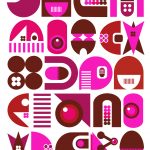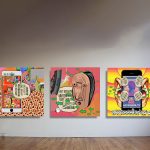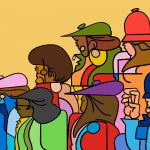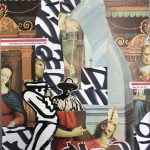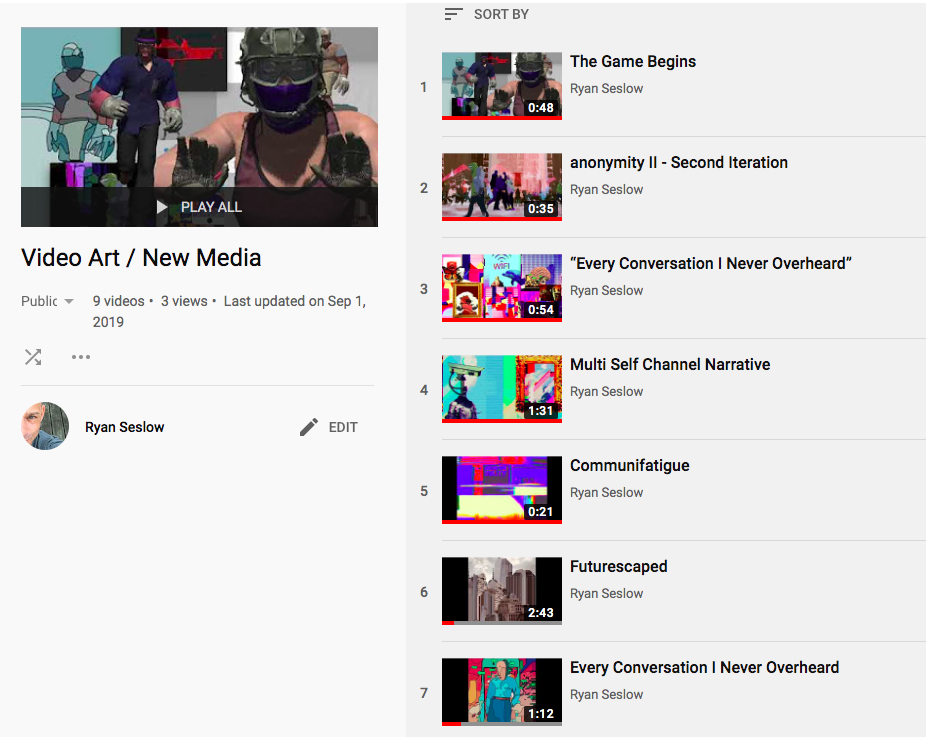Can I make a portfolio using the OpenLab?
Indeed!
This blog post has been created for the Bronx EdTech Showcase on May 7th 2021
Hello all, my name is Ryan Seslow, I’m a CBOX OpenLab Open Educational Technology & Pedagogy Fellow and an adjunct associate professor here at BMCC in the Media Arts & Technology Department.
Please join me in this visual example that displays both the creative potentials of a blog post, as well as the blog post in context to this website as a whole using the CBOX OpenLab platform.
Please know, this website IS the example, so after reading this post, please browse each page of the site and its description: https://openlab.bmcc.cuny.edu/portfolio-ryan-seslow/
Wait a second, blog posts can humorous, playful and lighthearted? And still serious.. sounds good, but what exactly is a portfolio?
Let’s define it, and perhaps there is metaphoric value in each one of the “traditional definition” examples below..
According to Merriam-Webster’s Dictionary:
Definition of a “portfolio”:
1: a hinged cover or flexible case for carrying loose papers, pictures, or pamphlets
2: from the use of such a case to carry documents of state: the office and functions of a minister of state or member of a cabinet
3: the securities held by an investor: the commercial paper held by a financial house (such as a bank)
4: a set of pictures (such as drawings or photographs) usually bound in book form or loose in a folder
5: a selection of a student’s work (such as papers and tests) compiled over a period of time and used for assessing performance or progress
Hold up, whoa! I can already feel your inner physiological triggers sending a bright red waving flag to your ego saying: “but making a portfolio is sooooo much work!”.
Guess what?
LET, AND ALLOW FOR THIS HAPPEN!
It is perfectly normal and alright to let your “old-portfolio-definition-self” bleed out. Exercise that energy. Let’s release it. Ill wait….Take a breath, and let’s remind ourselves that things need to be replaced and upgraded. Nothing is static. We learn, we grow, we expand and we can’t allow past experiences to drive the bus on new opportunities and new ways of seeing, experiencing and re-defining things. We have new tools at hand and we should implement them!
The word “portfolio” is not a bad word. If anything, like anything else, it’s a default term that officially requires your interaction, research, resonance and re-defining within context to who you are and who you are becoming in the process! With that said, let’s think about what the next step is in creating your new portfolio. The OpenLab is the perfect platform!
Let us understand the “why” part. Why do I need a portfolio? What is the purpose?
Here is a short list (feel free to add more to your updated definition)
- To showcase a body of your work. This is obvious, but curating and organizing things with intention becomes very specific. It activates a higher level of awareness and attention to the process / project. You will learn how to get selective, and this takes practice.
2. To show off your strengths, creativity, skills, effectiveness, efficiency, enthusiasm and passion! Of course, this energy translates directly through the work included in the portfolio. This will be what you believe is your best work at the time, but there is context. Keep reading.. (PS – it’s OK to have more than one portfolio to help showcase various bodies of works and projects, the OpenLab allows for this quite easily.) For example, I’m an applied artist, a digital artist, animation-maker, graphic-designer and a professor of art and design. Some of the works in my portfolio can overlap in theory but I keep a lot of the works separate to subject, but I enjoy showcasing them together on my website. That’s right, my website is also my portfolio. In fact, I have created a few, the links are below to help.
3. Display your process and evolution. Duration is your friend! Nothing shows off progress better than time. A metric of growth shows itself through time. When I look back at the design work I was doing 10 years ago in comparison to today I see an incredible difference in skill, technique, taste and where my thinking and focus was at the time. I also find a lot of ideas that can be pushed and expanded upon with more with my “awareness-of-growth eyes.” I write a lot about my work and share my process. I believe that this helps me reflect and explain myself better.
4. Stand out and show your style and authenticity – There is only one “you” that you can be. Yes, we certainly learn and are greatly inspired and influenced by others, but at the end of the day we must learn how to be our authentic selves. We must learn how to translate that through our mediums of choice. How will you do this? The short answer is through consistent experimentation and practice. Over time you will create your inner curator, and that part of yourself will begin putting pieces together in groups and compartments. The process will build and flow. This aspect is a journey and it too is anything from static. I take great interest in making changes, learning new things and applying them to the foundations that I continue to build.
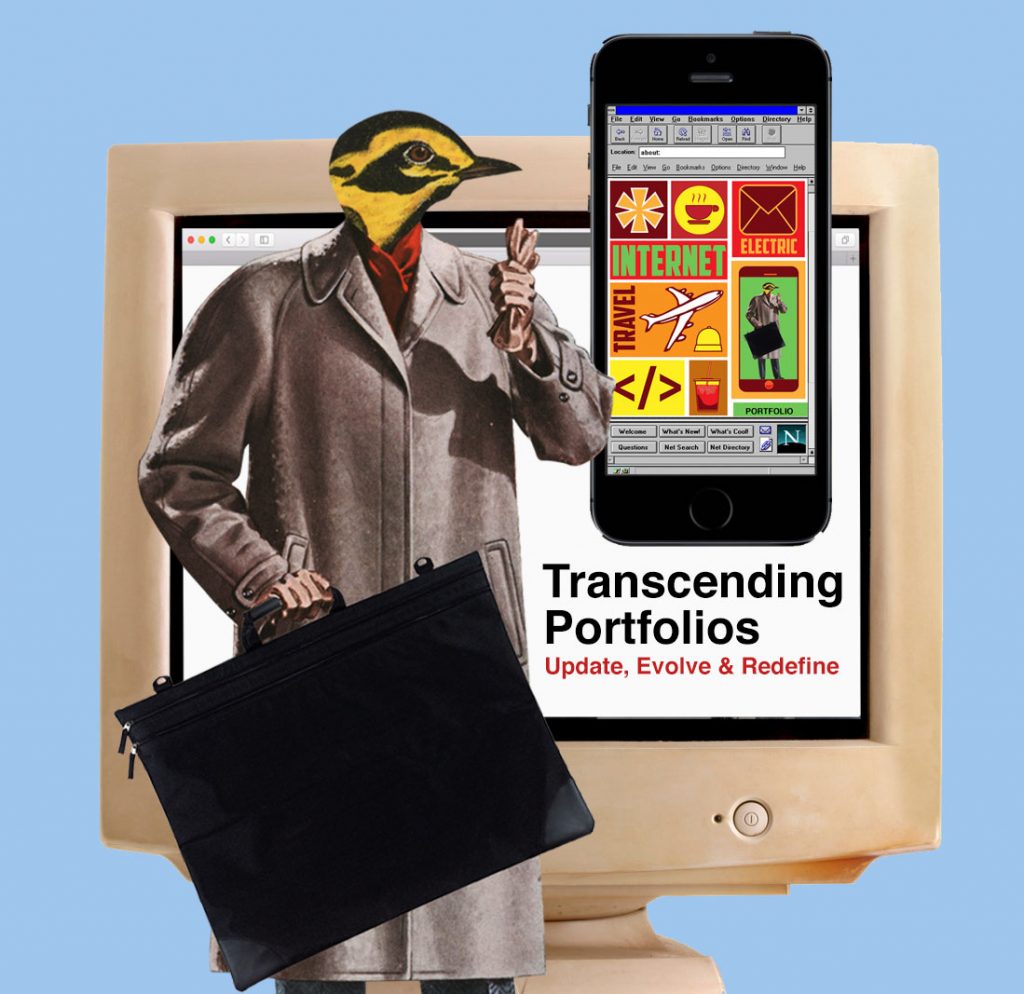
OK, all easier said than done… or is it you ask?
I hope that this post will inspire you to begin! Be patient with yourself. The goal is not to create a portfolio in one hour, and there is no such thing as “perfection” or the perfect portfolio. Let’s produce a result and discuss that result. Be generous with yourself in the process.
I admit it. I love to experiment, test, tweak, deconstruct, remix and repeat processes. I treat the creation process of such a task, creating a new portfolio, the same way that I approach making art. Suspend your judgement! Allow yourself to “make something that may really suck” as a first iteration. This is crucial to developing a contrast of your own. Again, you need to produce a result in order to make an assessment about the result. Until you do this, your contrast is someone else’s stuff / thing that has inspired or affected you.
I would like for you to consider the portfolio building and displaying option below. Im a huge fan of the OpenLab platform. I have created a sample and template / example using the OpenLab and my own self-hosted projects that go into the process. I consider all of these links below to be portfolios. Perhaps you have a preference over one or the other? I hope that these links below will help you get started.
Lets check out a few examples:
1. An OpenLab portfolio website “A How-to” example walk though: https://openlab.bmcc.cuny.edu/portfolio-ryan-seslow/
2. A single project showcase example using the OpenLab: https://openlab.bmcc.cuny.edu/an_infinitean_infinite_flow_flow/
3. A course site that uses the blogging prompt to share and expand course content: https://openlab.bmcc.cuny.edu/mma100-spring-2021/
Feel free to leave your questions and feedback in the comments section below!
Lets add more resources to this post together!
Or contact me at – rseslow@bmcc.cuny.edu






